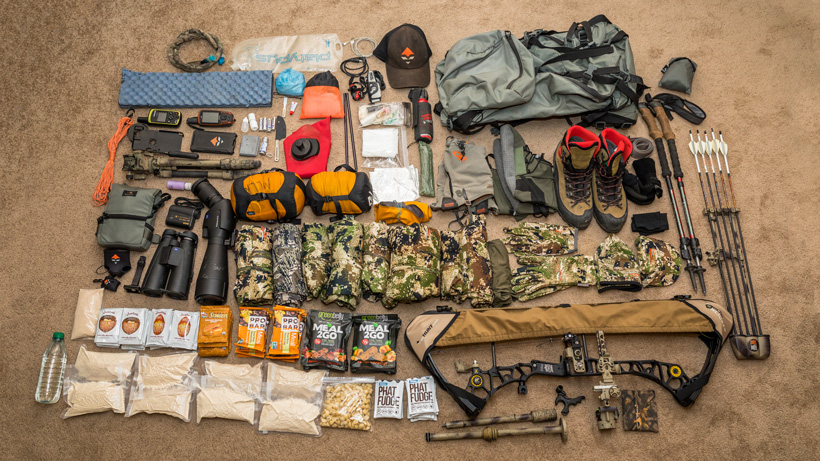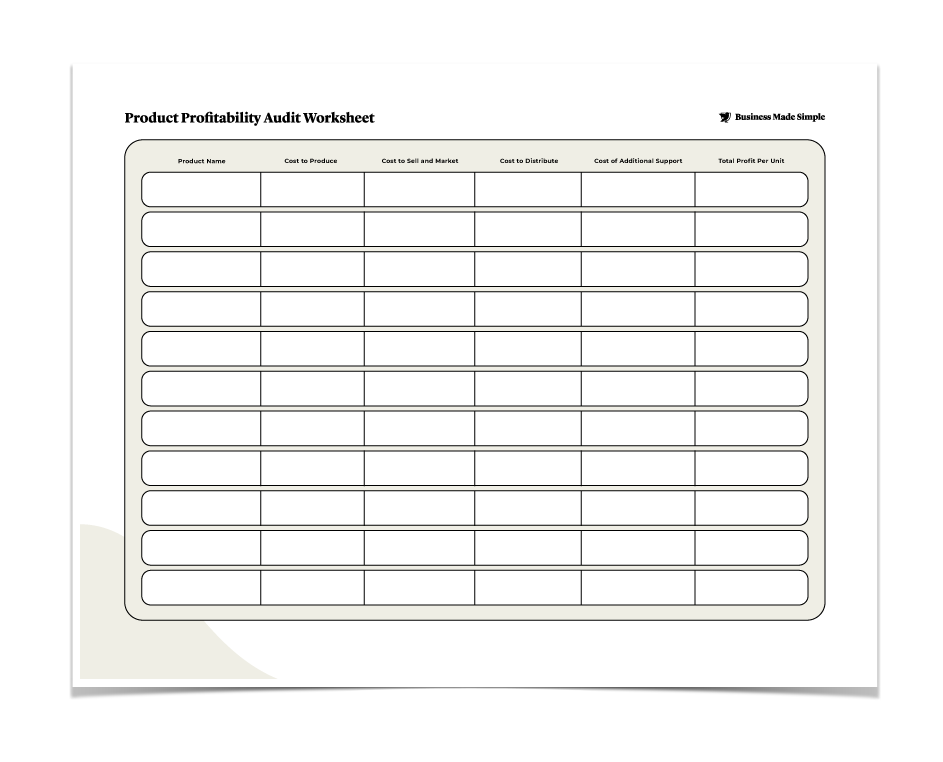
What would you do if you had to increase revenue and profit by 25% next year? If we’re heading into recession—and most telltale signs tell us we are (or already in one according to some economists)—how would you increase your profit to stay afloat?
Well, you might start by working on your marketing. Or you might start cold calling customers i.e. dialing for dollars. Or do what most companies do—cut costs.
In this article, I outline Business Made Simple’s Product Optimization Framework and give you five ways to find the money you need to grow your business in 2023 that might be right underneath your nose.
1. Perform a product profitability audit
So many business owners lose sight of their most profitable products. Revenue is crucial to keeping your business from crashing. So how do we audit our products to give us the clarity we need to optimize our product offering?
When sales are down of a particular product, we tend to increase marketing spend to get those sales back up—regardless if they are profitable or not. But, what we need to do is sell more of our profitable products to make up any shortfalls.
Now, you may be thinking, duh—of course I’m going to focus on selling more of my profitable products, but the reality is you don’t because you don’t know which ones are the most profitable!
We chase the downward trends of unprofitable products because the psychological reality is our minds tend to grab onto problems that cloud our ability to see what the real opportunity is. We are incredibly good at solving problems but awful at letting go of problems.
And this is the reason to conduct a product profitability audit. It will wake you up and help you see where your most significant opportunities are.
Here’s how you do it:
Rank the products you sell from the most profitable to the least profitable. Use the following table for your outline:
- Cost to produce
- Cost to sell and market
- Cost to distribute
- Cost of additional support
- Total profit per unit
Roughly figure out what it’s costing you, and then calculate your profit after you’ve added all that up. This is the number you want to know. Don’t worry about being exact; this is a leadership exercise—not an accounting exercise.
Now that you have them listed, what stands out? Take notice of your top sellers and your low ones.
Tip: If you have 5,000 products, list the top 10 per category.
Source: Business Made Simple
2. Devote more marketing and sales energy to your most profitable products
Now, look at your top three products to determine what is selling. You want to focus your time and energy on these products. It is easier to increase sales on products that are selling than it is to sell products that are not.
The Pareto principle, or the 80/20 rule, captures this perfectly. In most cases, 80% of your profit comes from 20% of your products. So, what this means, is if you increase your focus on sales/ marketing on the products that are selling, you’ll most likely double revenue!
So how do you do this?
- Can you create a sales funnel that sells more of your most profitable products?
- Can you feature your most profitable products more prominently on your website?
- Can you feature your most profitable products more prominently in your retail store?
- Can your sales (or customer service team) mention your most profitable products to every existing customer?
Tip: People buy solutions to problems. If you clearly define their problem, you’ll sell more products.
3. Consider dropping your least profitable products
Yes, you have products that you should no longer be selling. For example, you’ve created something you love—but no one is buying it. In other words, what you’re cooking, no one is eating. And if they are, that product is not making your business money.
Consider dropping your least profitable products. Here’s how:
- How much overhead goes into creating and selling your least profitable products?
- Are any of your least profitable products loss or even break-even leaders?
- How much time will be freed up to market and sell more profitable items if you drop your least profitable items?
Tip: Remove all emotional detachment from products that need to die! This will happen when you see how much money they are sucking out of your business.

Can you batch your products together and sell them as a new product? Photo Credit: GoHunt
4. Batch existing products to create a new product offering
Can you batch products together that solve a single problem? What combination of products can you combine that further solves your customer’s problem? For example, in the outdoor, hunting and shooting sports industry, you rarely head afield with one piece of equipment. We often need, in addition to a rifle: an optic, ammunition, sling, case, truck, gas, lunch, camo, etc. What can you combine to increase perceived value and cost in your product offering?
Here are a few examples:
- Pre-Season Scouting Kit (OnX app discount, binoculars, harness, and lens cloth)
- Wilderness Launch Bundle (tent, bear spray, fire stove and water filtration)
- Long Range Shooting Package (optic, mount, case, ballistics app and a wind meter)
Combine your top-selling products with add-ons your customers will need. These work great for retailers and online direct-to-consumers (D2C) brands.

Photo credit: Hunt Nahanni
5. Consider creating new products that are similar to your most profitable products
What new products can you create that will immediately increase your revenue that aligns with your best sellers? This typically works excellent for outfitters and guides who can add additional value to their clients’ hunting or fishing experience.
10% of people will spend 10x more of their current investment with you if you can deliver a better experience. For example, let’s say you’re an outfitter that charges $20,000 for a big horn sheep hunt. But for $10,000 more, you offer the VIP experience, providing an upgraded cabin, meals, and maybe a helicopter service from the airport to your location.
Don’t be afraid to ask for money if you can deliver more value.
In conclusion, the money you need to grow your business may be right underneath your nose. Your product optimization is the low-hanging fruit you need to generate more revenue in 2023 to come through the upcoming recession on top.
If you’re interested in tightening up your business as we head into 2023. Take the below assessment.
Thanks to Chris Dorsey for photo use.







This is such a smart take on this specific industry. I would also add that introducing a strategic in-store display, like you might with a planogram, can help bolster sales and bolster revenue insights. I started using software-generated planograms last year, and I’ve never had a better grasp on my own business.